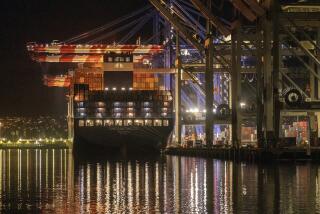San Diego History : The Battle of San Pasqual
- Share via
Sixty-five miles northeast of the Pueblo of San Diego, having slogged through driving rain, exhausted, hungry, and in need of healthy mounts to continue the final leg of their 2,000-mile trek, Gen. Stephen W. Kearny and his men arrived at Warner’s Ranch on Dec. 3, 1846.
When he embarked from Ft. Leavenworth, Kan., the previous June, Kearny was under orders to seize Mexico’s northern territories of New Mexico and California. New Mexico had fallen, not through battle, but skillful negotiations. California would be different.
Several days after Kearny’s arrival at Warner’s Ranch, he received word that Andres Pico and 82 mounted Californios were camped in the nearby San Pasqual Valley.
Kearny wanted an assessment of Pico’s strength and sent a detachment of scouts under the command of Lt. Thomas C. Hammond. However, the approach of Lt. Hammond and his men was announced by the barking of a startled dog-an enemy sentry fired his weapon to alert Pico’s camp.
The element of surprise now gone, Kearny decided to act rather than wait. At 2 o’clock on the morning of Dec. 6, he gave the order to move against the rebels. With Capt. Johnston in the lead, the Army of the West made its way down the Carreta Road.
Capt. Gillespie, leading a contingent of volunteers, described the scene: “We were marching by twos; and, as the advance, commanded by Capt. Johnston had reached the plain, the general (Kearny) gave the order to ‘trot,’ which Capt. Johnston misunderstood for ‘charge’; a shout, and off dashed the Dragoons at the charge, as fast as their tired, worn-out mules and horses could be urged.”
Johnson’s misreading of Kearny’s order, proved his undoing; falling victim to the first fatal shot fired that day. Kit Carson’s horse stumbled, throwing him to the ground, breaking his rifle. Contrary to Carson’s view that the Californios would flee in the face of modern U.S. muzzle-loaded rifles, the weapons were now useless, their cartridges wet from the previous day’s rain.
Some of the Dragoons used their rifles as clubs, others drew their swords. Both proved inadequate against the Californios’ muskets and 8-foot-long medieval lances.
Kearny rushed to aide Johnson’s men and managed to fight the rebels into retreat (to the site where the present-day battle monument on California 78 stands).
Having formulated a counterattack, the rebels rushed from their safe position to meet Capt. Moore’s second charge. Moore and many of his men were killed.
The American forces on the field were soon scattered and being cut-up piecemeal when Capt. Gillespie entered the fray. He was recognized by the Californios as the hated ruler of Los Angeles, and was surrounded by them with cries of, “There is Gillespie, at him men, at him!” He was wounded by their lances, but survived. And Gen. Kearny, fighting alone, still lived after receiving three lance wounds.
One of Kearny’s two mountain howitzers was lassoed by the rebels and dragged from the field. However, the other was readied by Gillespie, cigar lighter in hand, who lit the fuse. The explosion down field frightened the rebels, sending them galloping from San Pasqual Valley.
Of the American force of 153 men, 22 were killed and 16 wounded, mostly officers. Under a willow tree, the dead were buried in a common grave. The Battle of San Pasqual has lasted all of 10 minutes.
A subsequent battle would follow up atop Mule Hill near Lake Hodges, requiring Kit Carson and two others to sneak past the encircling rebel sentries, bringing help from Commodore Stockton. Once linked, Kearny, Stockton and Fremont would retake California for the last time.
SOURCE: The Silver Dons, by Richard F. Pourade; Kit Carson’s Long Walk, by Henry Schwartz
More to Read
Sign up for Essential California
The most important California stories and recommendations in your inbox every morning.
You may occasionally receive promotional content from the Los Angeles Times.













